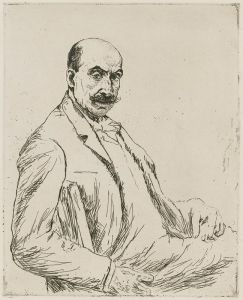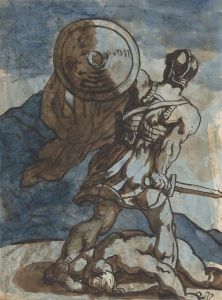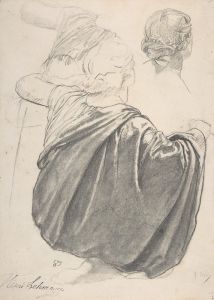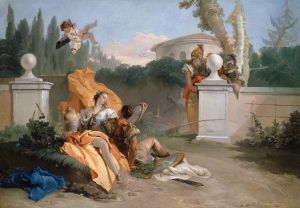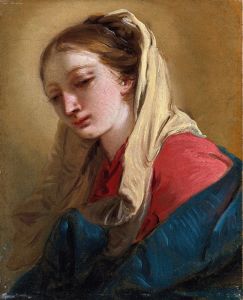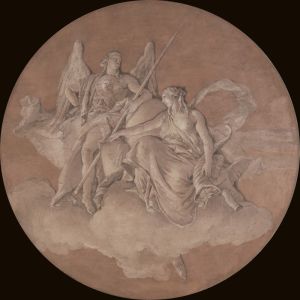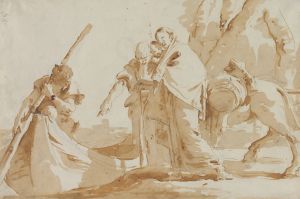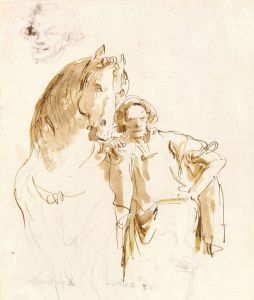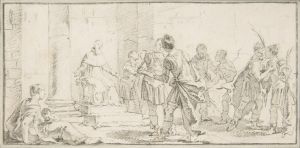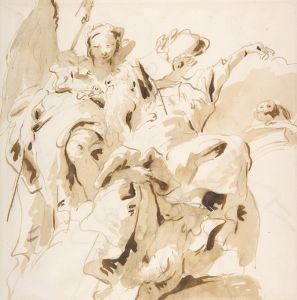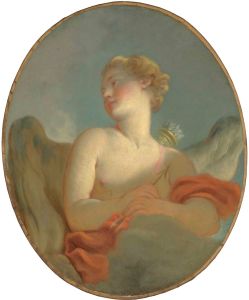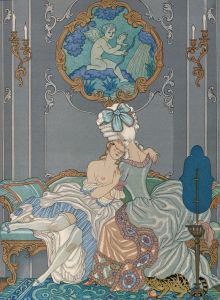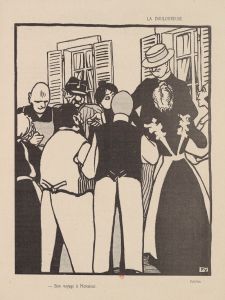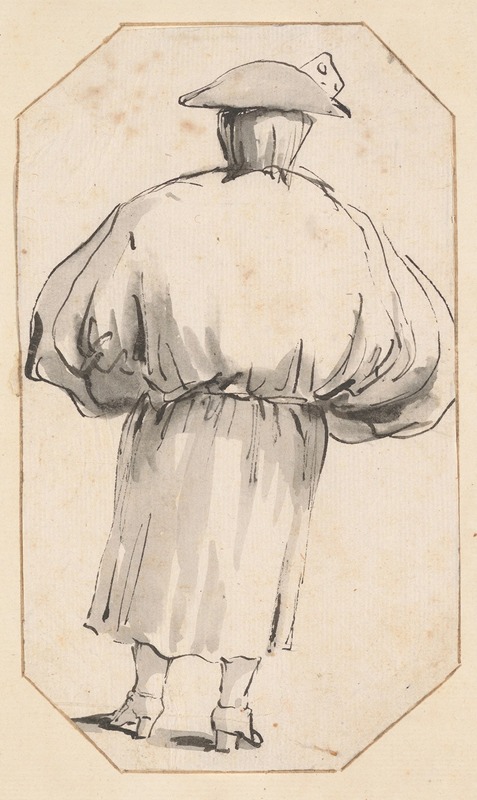
Caricature of a Person in a Voluminous Gown, Seen from Behind
A hand-painted replica of Giovanni Battista Tiepolo’s masterpiece Caricature of a Person in a Voluminous Gown, Seen from Behind, meticulously crafted by professional artists to capture the true essence of the original. Each piece is created with museum-quality canvas and rare mineral pigments, carefully painted by experienced artists with delicate brushstrokes and rich, layered colors to perfectly recreate the texture of the original artwork. Unlike machine-printed reproductions, this hand-painted version brings the painting to life, infused with the artist’s emotions and skill in every stroke. Whether for personal collection or home decoration, it instantly elevates the artistic atmosphere of any space.
Giovanni Battista Tiepolo, an Italian painter and printmaker, is renowned for his distinctive style and significant contributions to the art world during the 18th century. Among his diverse body of work is the drawing titled "Caricature of a Person in a Voluminous Gown, Seen from Behind." This piece exemplifies Tiepolo's skill in caricature, a genre that he explored alongside his more formal and grandiose compositions.
Tiepolo was born in Venice in 1696 and became one of the most prominent artists of his time, known for his frescoes and paintings that adorned palaces and churches across Europe. His work is characterized by its lightness, vibrant color palette, and dynamic compositions, often infused with a sense of drama and movement. While Tiepolo is primarily celebrated for his large-scale works, his caricatures reveal another facet of his artistic talent.
The drawing "Caricature of a Person in a Voluminous Gown, Seen from Behind" is a fine example of Tiepolo's ability to capture character and humor through minimal means. Caricature, as an art form, involves exaggerating certain features or characteristics to create a humorous or satirical effect. Tiepolo's caricatures often depicted figures from everyday life, capturing the quirks and peculiarities of his subjects with a playful yet insightful eye.
In this particular drawing, Tiepolo presents a figure seen from behind, dressed in an exaggeratedly large gown. The voluminous nature of the garment is a focal point, emphasizing the whimsical and humorous aspect of the caricature. The choice to depict the figure from behind adds an element of mystery and intrigue, inviting viewers to imagine the character's identity and story. This approach is typical of Tiepolo's caricatures, where the emphasis is on form and gesture rather than detailed facial features.
Tiepolo's caricatures were not merely exercises in humor; they also reflected the social and cultural milieu of his time. Through these drawings, he offered a commentary on fashion, society, and human nature, capturing the essence of 18th-century life with wit and insight. His caricatures were often informal sketches, created for personal amusement or as studies, yet they demonstrate his keen observational skills and his ability to convey complex ideas with simplicity and elegance.
The drawing "Caricature of a Person in a Voluminous Gown, Seen from Behind" is part of a larger collection of Tiepolo's works that showcase his versatility as an artist. While his grand frescoes and paintings earned him fame and commissions from patrons across Europe, his caricatures provide a more intimate glimpse into his creative process and personality. These works highlight Tiepolo's ability to blend humor with artistry, creating images that are both entertaining and thought-provoking.
In summary, Giovanni Battista Tiepolo's "Caricature of a Person in a Voluminous Gown, Seen from Behind" is a testament to his skill in the art of caricature. Through this drawing, Tiepolo captures the essence of his subject with humor and insight, reflecting the social and cultural context of his time. This work, along with his other caricatures, offers a unique perspective on Tiepolo's artistic legacy, showcasing his ability to engage with both the grand and the whimsical aspects of human experience.





